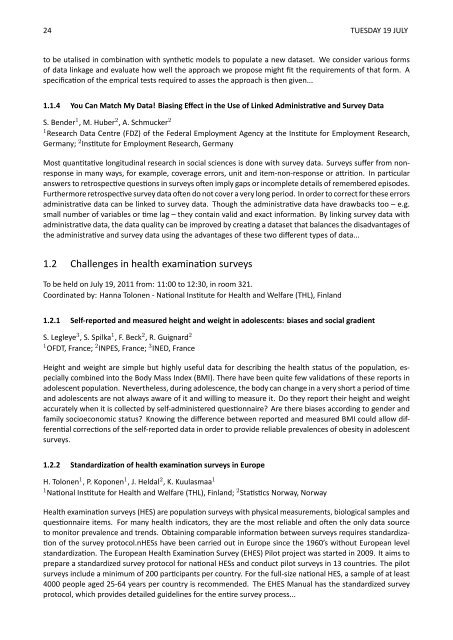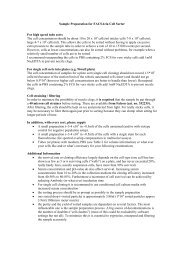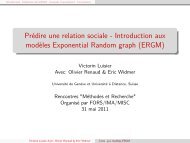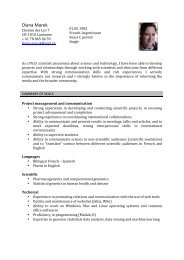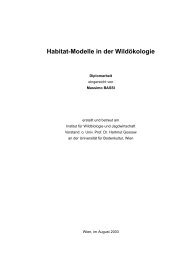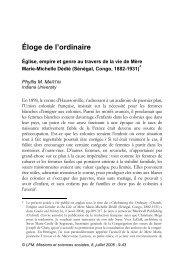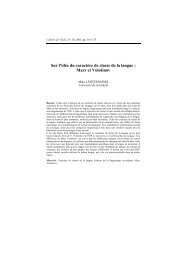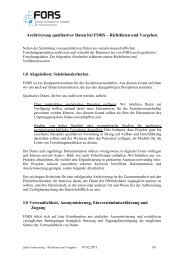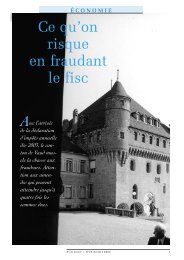conference programme book - European Survey Research ...
conference programme book - European Survey Research ...
conference programme book - European Survey Research ...
You also want an ePaper? Increase the reach of your titles
YUMPU automatically turns print PDFs into web optimized ePapers that Google loves.
24 TUESDAY 19 JULYto be utalised in combinaon with synthec models to populate a new dataset. We consider various formsof data linkage and evaluate how well the approach we propose might fit the requirements of that form. Aspecificaon of the emprical tests required to asses the approach is then given...1.1.4 You Can Match My Data! Biasing Effect in the Use of Linked Administrave and <strong>Survey</strong> DataS. Bender 1 , M. Huber 2 , A. Schmucker 21 <strong>Research</strong> Data Centre (FDZ) of the Federal Employment Agency at the Instute for Employment <strong>Research</strong>,Germany; 2 Instute for Employment <strong>Research</strong>, GermanyMost quantave longitudinal research in social sciences is done with survey data. <strong>Survey</strong>s suffer from nonresponsein many ways, for example, coverage errors, unit and item-non-response or arion. In parcularanswers to retrospecve quesons in surveys oen imply gaps or incomplete details of remembered episodes.Furthermore retrospecve survey data oen do not cover a very long period. In order to correct for these errorsadministrave data can be linked to survey data. Though the administrave data have drawbacks too – e.g.small number of variables or me lag – they contain valid and exact informaon. By linking survey data withadministrave data, the data quality can be improved by creang a dataset that balances the disadvantages ofthe administrave and survey data using the advantages of these two different types of data...1.2 Challenges in health examinaon surveysTo be held on July 19, 2011 from: 11:00 to 12:30, in room 321.Coordinated by: Hanna Tolonen - Naonal Instute for Health and Welfare (THL), Finland1.2.1 Self-reported and measured height and weight in adolescents: biases and social gradientS. Legleye 3 , S. Spilka 1 , F. Beck 2 , R. Guignard 21 OFDT, France; 2 INPES, France; 3 INED, FranceHeight and weight are simple but highly useful data for describing the health status of the populaon, especiallycombined into the Body Mass Index (BMI). There have been quite few validaons of these reports inadolescent populaon. Nevertheless, during adolescence, the body can change in a very short a period of meand adolescents are not always aware of it and willing to measure it. Do they report their height and weightaccurately when it is collected by self-administered quesonnaire? Are there biases according to gender andfamily socioeconomic status? Knowing the difference between reported and measured BMI could allow differenalcorrecons of the self-reported data in order to provide reliable prevalences of obesity in adolescentsurveys.1.2.2 Standardizaon of health examinaon surveys in EuropeH. Tolonen 1 , P. Koponen 1 , J. Heldal 2 , K. Kuulasmaa 11 Naonal Instute for Health and Welfare (THL), Finland; 2 Stascs Norway, NorwayHealth examinaon surveys (HES) are populaon surveys with physical measurements, biological samples andquesonnaire items. For many health indicators, they are the most reliable and oen the only data sourceto monitor prevalence and trends. Obtaining comparable informaon between surveys requires standardiza-on of the survey protocol.nHESs have been carried out in Europe since the 1960’s without <strong>European</strong> levelstandardizaon. The <strong>European</strong> Health Examinaon <strong>Survey</strong> (EHES) Pilot project was started in 2009. It aims toprepare a standardized survey protocol for naonal HESs and conduct pilot surveys in 13 countries. The pilotsurveys include a minimum of 200 parcipants per country. For the full-size naonal HES, a sample of at least4000 people aged 25-64 years per country is recommended. The EHES Manual has the standardized surveyprotocol, which provides detailed guidelines for the enre survey process...


